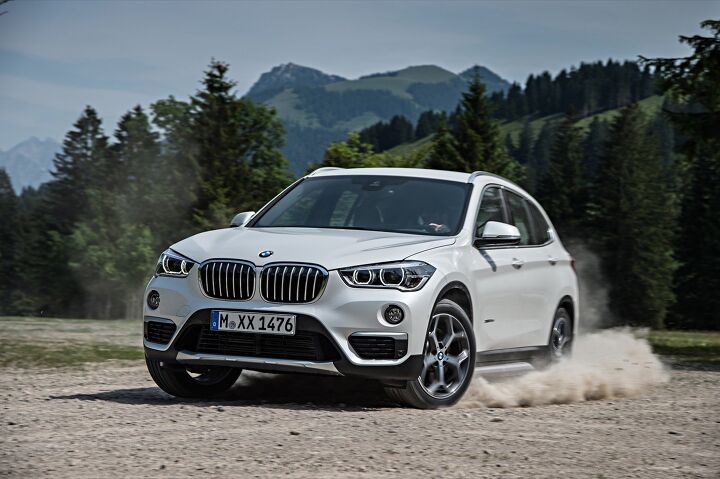Love for Luxury Cars in California and Florida Is Skewing National Luxury SUV Market Share
Depending where you live, it’s possible the shift away from luxury cars to luxury SUVs is dramatically more apparent than America’s nationwide figures suggest.
In 48 of 50 states, luxury utility vehicles outsell luxury cars. In seven states, premium brand utility vehicles form more than 65 percent of the premium market.
But according to Edmunds, the two states in which luxury cars still outperform luxury utility vehicles account for 31 percent of America’s luxury SUV market.
California and Florida, massive auto markets for mainstream vehicles and premium vehicles, are particularly sunny locales. And in particularly sunny locales, a portion of the appeal of utility vehicles — all-wheel drive — is siphoned off by the sun.
Premium utility vehicles are making headway even with less-than-average assistance from car buyers in the extreme southwest and southeast of the United States. 56 percent of luxury brand vehicle acquisitions now occur on the light truck side of the ledger, as the popularity of luxury SUVs and crossovers causes premium auto brands to report relatively stable sales despite rapidly decreasing luxury car sales.
As recently as 2002, utility vehicles accounted for barely more than 20 percent of premium brand auto sales in America. That figure was above 30 percent in 2004, nudging 40 percent in 2010, and cresting 50 percent by the end of 2015.
Now we’ve reached the point where only a handful of premium brands — BMW, Mercedes-Benz, Jaguar, plus new-to-market Alfa Romeo and Genesis — sell more cars than SUVs/crossovers. With each of those brands planning more utility vehicles (X2 and X7 at BMW, for instance, plus the new E-Pace at Jaguar) it won’t be long until every premium auto brand generates more of their U.S. volume with SUVs and crossovers than cars.
Acura, Volvo, Lexus, Cadillac, Porsche, Infiniti, and Lincoln all produce more than 60 percent of their sales with utility vehicles.
“Luxury,” of course, is increasingly a difficult term to define. With premium brands marketing subcompact luxury crossovers, what is luxury? Mainstream brands have transaction prices for large SUVs rising above $60,000, Edmunds data shows, while subcompact luxury crossovers’ average transaction prices are at $38,000, in line with midsize SUVs/crossovers sold by mainstream brands.
That move downmarket has created massive conquest opportunities for premium auto brands. At 32 percent, the percentage of premium auto buyers who traded in a mainstream brand vehicle is at an all-time high in 2017, and half of the buyers in that subcompact luxury utility vehicle segment move over from a mainstream brand.
[Images: BMW, Jaguar]
Timothy Cain is a contributing analyst at The Truth About Cars and Autofocus.ca and the founder and former editor of GoodCarBadCar.net. Follow on Twitter @timcaincars.
More by Timothy Cain
Latest Car Reviews
Read moreLatest Product Reviews
Read moreRecent Comments
- MaintenanceCosts Nobody here seems to acknowledge that there are multiple use cases for cars.Some people spend all their time driving all over the country and need every mile and minute of time savings. ICE cars are better for them right now.Some people only drive locally and fly when they travel. For them, there's probably a range number that works, and they don't really need more. For the uses for which we use our EV, that would be around 150 miles. The other thing about a low range requirement is it can make 120V charging viable. If you don't drive more than an average of about 40 miles/day, you can probably get enough electrons through a wall outlet. We spent over two years charging our Bolt only through 120V, while our house was getting rebuilt, and never had an issue.Those are extremes. There are all sorts of use cases in between, which probably represent the majority of drivers. For some users, what's needed is more range. But I think for most users, what's needed is better charging. Retrofit apartment garages like Tim's with 240V outlets at every spot. Install more L3 chargers in supermarket parking lots and alongside gas stations. Make chargers that work like Tesla Superchargers as ubiquitous as gas stations, and EV charging will not be an issue for most users.
- MaintenanceCosts I don't have an opinion on whether any one plant unionizing is the right answer, but the employees sure need to have the right to organize. Unions or the credible threat of unionization are the only thing, history has proven, that can keep employers honest. Without it, we've seen over and over, the employers have complete power over the workers and feel free to exploit the workers however they see fit. (And don't tell me "oh, the workers can just leave" - in an oligopolistic industry, working conditions quickly converge, and there's not another employer right around the corner.)
- Kjhkjlhkjhkljh kljhjkhjklhkjh [h3]Wake me up when it is a 1989 635Csi with a M88/3[/h3]
- BrandX "I can charge using the 240V outlets, sure, but it’s slow."No it's not. That's what all home chargers use - 240V.
- Jalop1991 does the odometer represent itself in an analog fashion? Will the numbers roll slowly and stop wherever, or do they just blink to the next number like any old boring modern car?
































Comments
Join the conversation
Doubtful that many owners of larger mainstream branded vehicles have moved to a subcompact luxury branded vehicle unless they are recent empty nesters. And it goes both ways. There are owners of luxury branded sedans who have moved to loaded, full-size vehicles (SUVs or full-size CUVs) whether it be mainstream brands or premium brands like Buick or GMC.
Manual = Luxury item. Even Ferrari can't afford to them anymore.